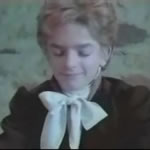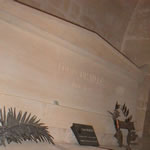

 |
 |
 |
 |
 |
 |
In this issue: |
READ CAPTIONS ACROSS AMERICA | BRAILLE |
skip to quick hits
Fifth Annual Read Captions Across America Celebration: March 2, 2010Back to article listing
It’s that time of year again—time to start planning for both the NEA’s Read Across America and the DCMP’s own Read Captions Across America (RCAA)! Hundreds of schools and libraries have participated by hosting RCAA events since the campaign’s launch in 2006, and this year, we want to see even more students involved in RCAA activities. That’s why we’ve designed a brand new Read Captions Across America website to make this year’s event planning a bit more simple and convenient. Along with the new site, we’ve also created a new RCAA Event Kit consisting of posters, bookmarks, and certificates and—for registered DCMP members—a special DVD containing all 6 Dr. Seuss titles in our collection for use at your RCAA event. Of course, there is no charge for the event kit, which can be ordered via our convenient online order form (just be sure to include your DCMP username if you would like the DVD included).
Though RCAA (and NEA’s Read Across America) is closely tied to Dr. Seuss, there’s no reason that your RCAA event shouldn’t include other captioned media, particularly that which is based on popular children’s books. Check out the RCAA media section of the RCAA site for links to flyers containing suggested children’s literature titles. We hope that this year’s RCAA is the biggest ever! If you have ideas to share, questions or comments about RCAA and captioned media, or would like to let us know about your plans, please contact us early and often! We look forward to a sea-to-sea celebration of captioned media on March 2nd and all year long! Young Heroes: Louis Braille Now Available from the DCMP in Celebration of Braille’s 201st BirthdayBack to article listing
In celebration of the birthday (January 4—earlier this week) of perhaps the most pivotal figure in the history of communication for people who are blind, the DCMP is pleased to present the short film Young Heroes: Louis Braille, available with description and—for the first time—captions. Follow the story of Louis, from the accident in his hometown of Coupvray, France that led to his blindness at the age of 3, to his scholarship at the Royal Institution for Blind Youth in Paris, to the development of his famous 6-dot code, which led to a revolution in communication for people who are blind and an eventual posthumous honor: burial in the Pantheon in Paris. Today, Braille’s code is used in hundreds of languages by people all over the world. The original slate and stylus have evolved to personal hand-held electronic braille notetakers, and the large volumes of embossed paper have been partially supplanted by refreshable braille displays connected to computers and other electronic equipment. Though the number of children who are blind and braille readers has dwindled in recent years [DOC], Louis Braille’s innovative system continues—to this day—its contribution to literacy for people who are blind. 
Additional Information and Trivia for TeachersLouis, also an accomplished pianist and organist, adapted his braille code for musical transcription; his friend Gabriel Gauthier was among the first to learn how to read music in braille. Andre Pigner who, in the Young Heroes film, was depicted as Dufau’s assistant at the Institute, was actually his predecessor. Also, the “competition” between Barbier’s nocturnal writing and Louis’ 6-dot code was an adaptation of a demonstration of braille given to the public at the dedication of the new Institute building in 1843 and was led, incidentally, by Dufau, who had since been convinced by his assistant (and self-interest, given the popularity of the code) to support Louis’ efforts. Check the resource guide for Young Heroes: Louis Braille for more bits of trivia and background information about Louis. Sources For More Information About Louis Braille and His Code
|
Subscribe to the NewsletterSubscribe to the DCMP newsletter.
Emerging Technologies Partnership UpdateOur “Emerging Technologies” partnership with CaptionMax continues. Starting this month, we’ll highlight a recently added series or focus in on titles from a particular subject area as part of our monthly newsletter coverage. 
This month we’ve prepared an informational flyer [PDF] about the Visualizing Cell Processes biology series, available to DCMP members as part of this ongoing activity. (There will also be a link in the footer of each newsletter to a complete listing of titles produced via this partnership.) 

Remember to Make MLK Day a “Day On” for Social ChangeThis year, Martin Luther King Jr.’s birthday will be officially observed on January 18th. While many businesses and government offices are closed for the federal holiday, millions of Americans will be joining the effort to transform the holiday into a “Day of Service.” Take a moment to review this title about Dr. King—and, perhaps, sample his famous “I Have a Dream” speech, or one of many other inspirational speeches available from the DCMP—to learn why the great civil and human rights leader would encourage every American to show their support for their community and help to transform their society into one reflecting the ideals of equality and liberty. 

YouTube AdditionsDon’t forget to visit our YouTube channel often. Just last week, we added a captioned and described version of Collin Raye’s “The Eleventh Commandment” and the 1979 Interview with Dr. Malcolm J. Norwood. Let us know what kind of content you would like to see on our YouTube channel—previews, exclusive content, user-submitted content, etc. Stop by our Facebook page and leave a note on our wall if you have something to say! 

Kennedy Center Aims for Accessibility in the ArtsThe Washington, D.C.-based Kennedy Center has historically been at the forefront of the movement to make the arts more accessible to all Americans. Along with a published list of accessible performances (including those with ASL interpretation, audio description, and open captioning), the Kennedy Center also provides access to its “Performing Arts Series,” which is available via satellite and the internet, to teachers and students across the country. Along with the broadcasts themselves (most of which are available with captions), the series—exploring a range of topics, including music, dance, theater, and literature—is supplemented with downloadable PDF study guides. 
|
 |
|
|
The Described and Captioned Media Program is funded by the U.S. Department of Education and administered by the National Association of the Deaf. |
DCMP Website Links |
The contents of this newsletter were developed under a grant from the U.S. Department of Education, Cooperative Agreement #H327N060002. However, those contents do not necessarily represent the policy of the U.S. Department of Education, and you should not assume endorsement by the Federal Government. Project Officer, Ernest Hairston.






